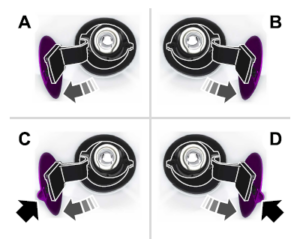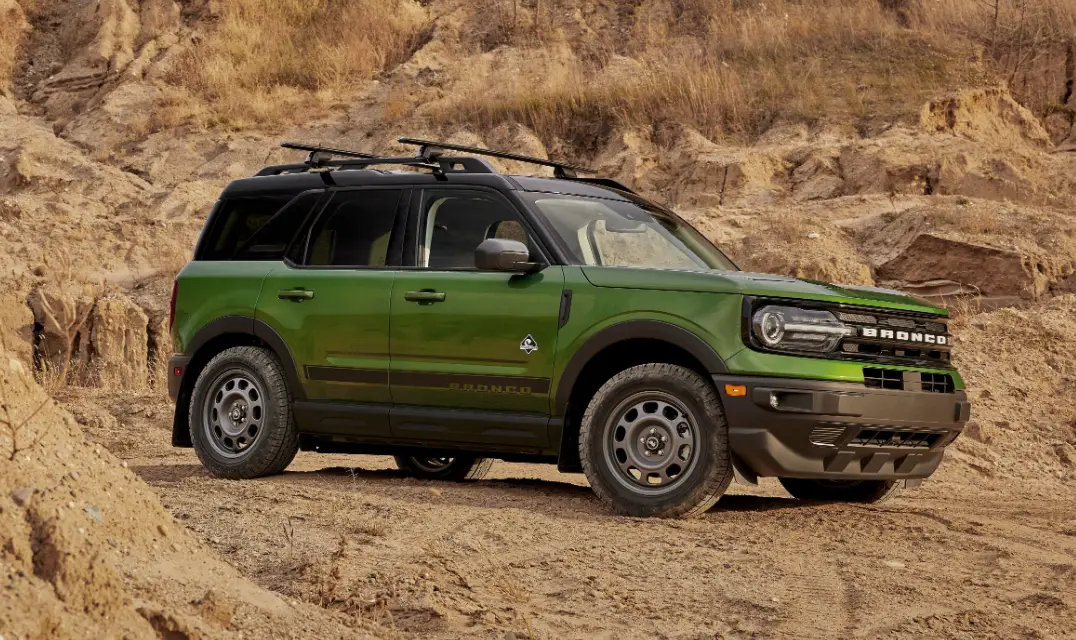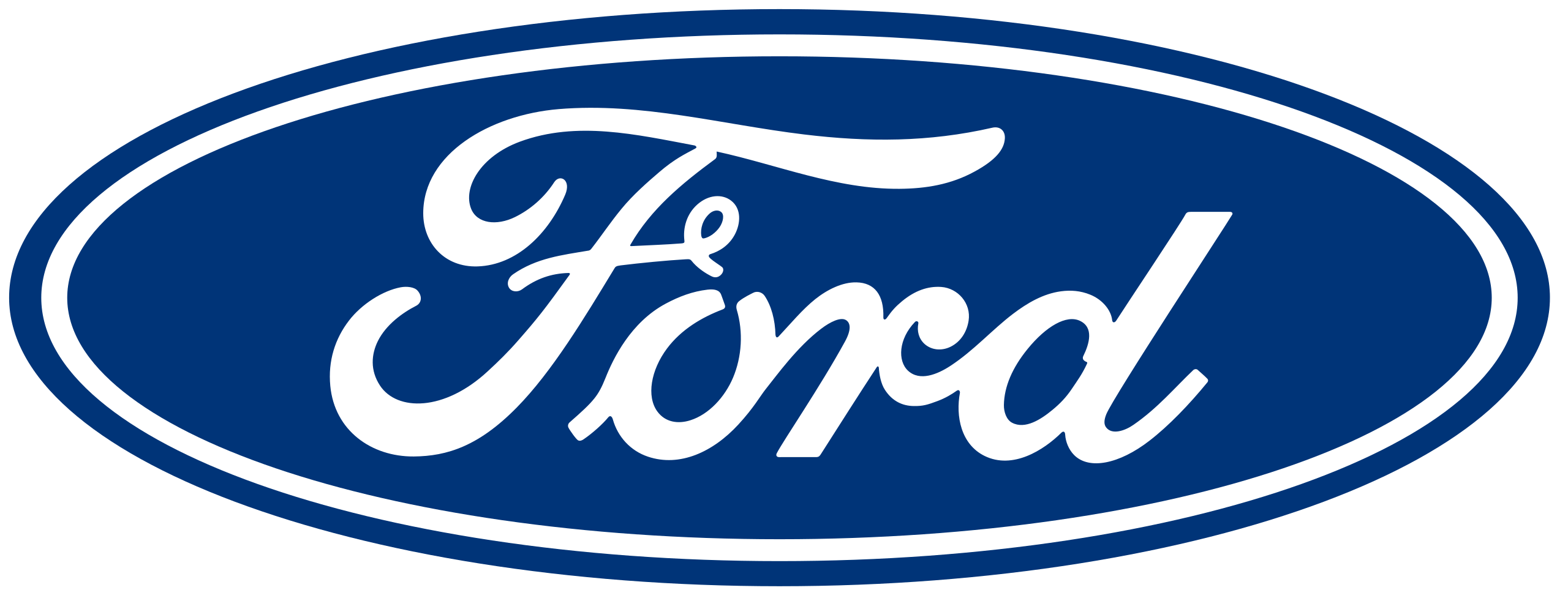2023 FORD Bronco Sport Fuels and Refueling Quick Guide
Thank you for visiting the thorough 2023 FORD Bronco Sport Fuels and Refueling Guide. The 2023 FORD Bronco Sport is your adventurous friend, and this book is your key to learning the best fueling practices for your adventurous partner. You will find a variety of information about the many gasoline types that work with your Bronco Sport in the pages that follow, as well as professional tips on how to refuel effectively. Your Bronco Sport will operate at its peak performance whether you’re traveling off the beaten road, negotiating urban environments, or driving on vast highways.
This manual explores the technological advancements that feed the engine in your Bronco Sport in addition to providing step-by-step instructions for refueling. You’ll develop a deeper understanding of the seamless balance of power and efficiency that characterizes the 2023 FORD Bronco Sport, from its state-of-the-art fuel management system to its eco-conscious features. Join us as we examine the variety of fueling options, from conventional to eco-friendly solutions, enabling you to make selections that are in line with your driving requirements and ideals. Whether you’re an experienced Bronco enthusiast or a novice learning about its possibilities, this manual gives you the knowledge you need to start every journey properly.
The 2023 Ford Bronco fuel type offers hybrid powertrain options, allowing drivers to choose between traditional gasoline engines or the more fuel-efficient hybrid models. This versatility caters to different preferences, with the gasoline models typically using regular unleaded fuel and the hybrid models integrating a combination of gasoline and electric power
2023 Ford Bronco Specs, Price, Features, Mileage (Brochure)
SAFETY PRECAUTIONS
WARNING: Do not overfill the fuel tank. The pressure in an overfilled tank may cause leakage and lead to fuel spray and fire.
WARNING: The fuel system may be under pressure. If you hear a hissing sound near the fuel filler inlet, do not refuel until the sound stops. Otherwise, fuel may spray out, which could cause serious personal injury.
WARNING: Fuels can cause serious injury or death if misused or mishandled.
WARNING: Fuel may contain benzene, which is a cancer-causing agent.
WARNING: When refueling always shut the engine off and never allow sparks or open flames near the fuel tank filler valve. Never smoke or use a cell phone while refueling. Fuel vapor is extremely hazardous under certain conditions. Avoid inhaling excess fumes.
Follow these guidelines when refueling:
- Extinguish all smoking materials and any open flames before refueling your vehicle.
- Always switch the engine off before refueling.
- Automotive fuels can be harmful or fatal if swallowed. Fuel is highly toxic and if swallowed can cause death or permanent injury. If fuel is swallowed immediately call a physician, even if no symptoms are immediately apparent. The toxic effects of fuel may not be apparent for hours.
- Avoid inhaling fuel vapors. Inhaling fuel vapor can lead to eye and respiratory tract irritation. In severe cases, excessive or prolonged breathing of fuel vapor can cause serious illness and permanent injury.
- Avoid getting fuel in your eyes. If you splash fuel in your eyes, immediately remove contact lenses (if worn), flush with water for 15 minutes and seek medical attention. Failure to seek proper medical attention could lead to permanent injury.
- Fuels can be harmful if absorbed through the skin. If you splash fuel on your skin, clothing or both, promptly remove contaminated clothing and thoroughly wash your skin with soap and water. Repeated or prolonged skin contact causes skin irritation.
- Be particularly careful if you are taking Antabuse or other forms of Disulfiram for the treatment of alcoholism. Breathing fuel vapors could cause an adverse reaction, serious personal injury or sickness. Immediately call a physician if you experience any adverse reactions.
FUEL QUALITY
Choosing the Right Fuel

Your vehicle is designed to operate on regular unleaded gasoline with a minimum pump (R+M)/2 octane rating of 87. Some fuel stations, particularly those in high altitude areas, offer fuels posted as regular unleaded gasoline with an octane rating below 87. The use of these fuels could result in engine damage that will not be covered by the vehicle warranty.
For best overall vehicle and engine performance, premium fuel with an octane rating of 91 or higher is recommended. The performance gained by using premium fuel is most noticeable in hot weather as well as other conditions, for example when towing a trailer. See Towing.
Do not be concerned if the engine sometimes knocks lightly. However, if the engine knocks heavily while using fuel with the recommended octane rating, contact an authorized dealer to prevent any engine damage.
We recommend Top Tier detergent gasolines, where available to help minimize engine deposits and maintain optimal vehicle and engine performance. For additional information, refer to www.toptiergas.com.
Note: Use of any fuel for which the vehicle was not designed can impair the emission control system, cause loss of vehicle performance, and cause damage to the engine which may not be covered by the vehicle Warranty.
Do not use:
- Diesel fuel.
- Fuels containing kerosene or paraffin.
- Fuel containing more than 15% ethanol or E85 fuel.
- Fuels containing methanol.
- Fuels containing metallic-based additives, including manganese-based compounds.
- Fuels containing the octane booster additive, methylcyclopentadienyl manganese tricarbonyl (MMT).
- Leaded fuel, using leaded fuel is prohibited by law.
The use of fuels with metallic compounds such as methylcyclopentadienyl manganese tricarbonyl (commonly known as MMT), which is a manganese-based fuel additive, will impair engine performance and affect the emission control system.
FUEL FILLER FUNNEL LOCATION
The fuel filler funnel is located under the rear bench seat or behind the rear seat.
RUNNING OUT OF FUEL
Running out of fuel can cause damage not covered by the vehicle Warranty.
If your vehicle runs out of fuel:
- Add a minimum of 1.3 gal (5 L) of fuel to restart the engine.
- You may need to switch the ignition from off to on several times after refueling to allow the fuel system to pump the fuel from the tank to the engine. When restarting, cranking time takes a few seconds longer than normal.
Note: If your vehicle is on a steep slope, more fuel may be required.
Filling a Portable Fuel Container
WARNING: Flow of fuel through a fuel pump nozzle can produce static electricity. This can cause a fire if you are filling an ungrounded fuel container. Use the following guidelines to avoid electrostatic charge build-up, which can produce a spark, when filling an ungrounded fuel container:
- Only use an approved fuel container to transfer fuel to your vehicle. Place the container on the ground when filling it.
- Do not fill a fuel container when it is inside your vehicle (including the cargo area).
- Keep the fuel pump nozzle in contact with the fuel container when filling it.
- Do not use a device that holds the fuel pump nozzle lever in the fill position.
Adding Fuel From a Portable Fuel Container
WARNING: Do not insert the nozzle of a fuel container or an aftermarket funnel into the fuel filler neck. This may damage the fuel system filler neck or its seal and cause fuel to run onto the ground.
WARNING: Do not try to pry open or push open the caplets fuel system with foreign objects. This could damage the fuel system and its seal and cause injury to you or others.
WARNING: Do not dispose of fuel in the household refuse or the public sewage system. Use an authorized waste disposal facility.
When refueling the vehicle fuel tank from a fuel container, use the fuel filler funnel included with your vehicle. See Fuel Filler Funnel Location .
Note: Do not use aftermarket funnels as they may not work with the caplets fuel system and can damage it.
When refueling the vehicle fuel tank from a fuel container, do the following:
- Fully open the fuel filler door.
- Fully insert the fuel filler funnel into the fuel filler inlet.

- Add fuel to your vehicle from the fuel container.
- Remove the fuel filler funnel.
- Fully close the fuel filler door.
- Clean the fuel filler funnel and place it back in your vehicle or correctly dispose of it.
Note: Extra funnels can be purchased from an authorized dealer if you choose to dispose of the funnel.
Fuel and Refueling
REFUELING
Refueling System Overview

- A. Fuel filler door.
B. Fuel tank filler valve. - C. Fuel tank filler pipe.
Your vehicle does not have a fuel tank filler cap.

- A. Left-hand side. To open the fuel filler door, press the center rear edge of the fuel filler door and then release.
- B. Right-hand side. To open the fuel filler door, press the center rear edge of the fuel filler door and then release.
- C. Left-hand side. Pull the rear of the fuel filler door to open it.
- D. Right-hand side. Pull the rear of the fuel filler door to open it.
Refueling Your Vehicle
WARNING: When refueling always shut the engine off and never allow sparks or open flames near the fuel tank filler valve. Never smoke or use a cell phone while refueling. Fuel vapor is extremely hazardous under certain conditions. Avoid inhaling excess fumes.
WARNING: The fuel system may be under pressure. If you hear a hissing sound near the fuel filler inlet, do not refuel until the sound stops. Otherwise, fuel may spray out, which could cause serious personal injury.
WARNING: Do not pry open the fuel tank filler valve. This could damage the fuel system. Failure to follow this instruction could result in fire, personal injury or death.
WARNING: Do not remove the fuel pump nozzle from its fully inserted position when refueling.
WARNING: Stop refueling when the fuel pump nozzle automatically shuts off for the first time. Failure to follow this will fill the expansion space in the fuel tank and could lead to fuel overflowing.
WARNING: Do not overfill the fuel tank. The pressure in an overfilled tank may cause leakage and lead to fuel spray and fire.
WARNING: Wait at least five seconds before removing the fuel pump nozzle to allow any residual fuel to drain into the fuel tank.
- Fully open the fuel filler door.
- Select the correct fuel pump nozzle for your vehicle.

- Insert the fuel pump nozzle up to the first notch on the nozzle A. Keep the fuel pump nozzle resting on the fuel tank filler pipe.

- Hold the fuel pump nozzle in position B when refueling. Holding the fuel pump nozzle in position A can affect the flow of fuel and shut off the fuel pump nozzle before the fuel tank is full.

- Operate the fuel pump nozzle within the area shown.

- When you finish refueling slightly raise the fuel pump nozzle and slowly remove it.
- Fully close the fuel filler door.
Do not attempt to start the engine if you have filled the fuel tank with incorrect fuel. Incorrect fuel use could cause damage not covered by the vehicle Warranty. Have your vehicle immediately checked.
Refueling System Warning
If the fuel tank filler valve does not fully close, a message could appear in the information display.
Message
Check Fuel Fill Inlet
If the message appears, do the following:
- Stop your vehicle as soon as it is safe to do so and switch the engine off.
- Shift into park (P) or neutral (N).
- Apply the parking brake.
- Fully open the fuel filler door.
- Check the fuel tank filler valve for any debris that may be restricting its movement.
- Remove any debris from the fuel tank filler valve.
- Fully insert a fuel pump nozzle or the fuel filler funnel provided with your vehicle into the fuel filler pipe. See Fuel Filler Funnel Location . This action should dislodge any debris that may be preventing the fuel tank filler valve from fully closing.
- Remove the fuel pump nozzle or fuel filler funnel from the fuel filler pipe.
- Fully close the fuel filler door.
Note: The message may not immediately reset. If the message continues to appear and a warning lamp illuminates, have your vehicle checked as soon as possible.
FUEL CONSUMPTION
Advertised Capacity
The advertised capacity is the maximum amount of fuel that you can add to the fuel tank when the fuel gauge indicates empty. See Capacities and Specifications.
In addition, the fuel tank contains an empty reserve. The empty reserve is an unspecified amount of fuel that remains in the fuel tank when the fuel gauge indicates empty.
Note: When refueling your vehicle after the fuel gauge indicates empty, you might not be able to refuel the full amount of the advertised capacity due to the empty reserve still present in the fuel tank.
Filling the Fuel Tank
For consistent results when refueling:
- Turn the ignition off before fueling; an inaccurate reading results if the engine is left running.
- Use the same fill rate (low-medium-high) each time the tank is filled.
- Allow no more than one automatic shut-off when refueling.
Results are most accurate when the filling method is consistent.
Calculating Fuel Economy
Your vehicle calculates fuel economy figures through the trip computer average fuel function. See Information Displays.
The first 1,000 mi (1,500 km) of driving is the break-in period of the engine. A more accurate measurement is obtained after 2,000 mi (3,000 km).
- Completely fill the fuel tank and record the initial odometer reading.
- Each time you fill the fuel tank, record the amount of fuel added.
- After at least three fill ups, fill the fuel tank and record the current odometer reading.
- Subtract your initial odometer reading from the current odometer reading.
To calculate L/100 km (liters per 100 kilometers) fuel consumption, multiply the liters used by 100, then divide by kilometers traveled. To calculate MPG (miles per gallon) fuel consumption, divide miles traveled by gallons used.
Keep a record for at least one month and record the type of driving, for example city or highway. This provides an accurate estimate of your vehicle’s fuel economy under current driving conditions. Keeping records during summer and winter shows how temperature impacts fuel economy.
Conditions
- Heavily loading your vehicle reduces fuel economy.
- Carrying unnecessary weight in your vehicle may reduce fuel economy.
- Avoid adding accessories that increase aerodynamic drag to your vehicle such as bug deflectors, car top carriers and ski or bike racks.
- Using fuel blended with alcohol may lower fuel economy.
- Fuel economy may decrease with lower temperatures.
- Fuel economy may decrease when driving short distances.
- You will get better fuel economy when driving on flat terrain than when driving on hilly terrain.
FAQs
The 2023 FORD Bronco Sport is made to run on unleaded normal petrol with an octane level of 87 or above.
No, the 2023 FORD Bronco Sport is not made to be compatible with E85 ethanol fuel.
The fuel door is opened by lightly pressing the back edge of the door, which causes it to pop up.
Although the actual number of gallons in the gasoline tank may vary somewhat, the Bronco Sport’s fuel tank typically holds between 16.0 and 16.5 gallons.
To avoid running out of petrol, it is advised that you refuel your Bronco Sport when the fuel gauge is around 1/4 full.
Although regular unleaded fuel is what the Bronco Sport is built to run on, doing so is not necessary and may not appreciably increase performance.
Practice smooth driving techniques, maintain regular maintenance, and keep your tires correctly inflated to increase fuel efficiency.
To reduce the chance of fuel vapors igniting, it is advised to turn off the engine before refueling.
Do not start the engine if you accidentally used the wrong fuel. Tow your car to a servicing facility or get in touch with a qualified mechanic.
An instrument cluster display for fuel economy is provided by the onboard computer in the Bronco Sport. You can do it manually by keeping track of your driving distance and fuel use.
Modern cars, like the Bronco Sport, are typically not built to operate effectively without the use of fuel additives.
The Bronco Sport should have an octane rating of 87 or above.
The fuel filter replacement period varies, but as a general rule, it should be changed every 30,000 to 40,000 miles or as instructed in your owner’s handbook.
Yes, you can tow a trailer while the fuel tank is full. However, be aware of the extra weight and modify your driving style accordingly.
Before touching the fuel nozzle in cold weather, make sure your hands and the fuelling area are clear of any snow or ice. This will provide a secure connection and help avoid fuel spillage.
Useful Link
View Full PDF: 2023 FORD Bronco Sport| Auto User Guide
Download Manual: Ford Vehicle Owner Manuals | Ford


